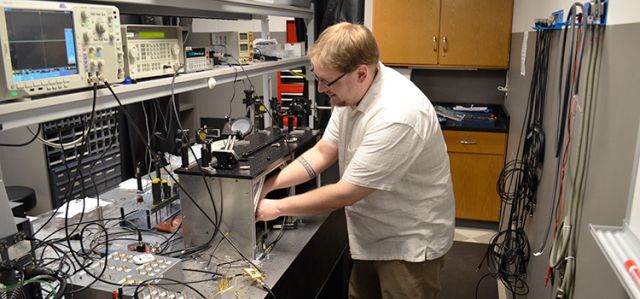Speckle-Metric-Optimization-Based Adaptive Optics for Laser Beam Projection and Coherent Beam Combining
Document Type
Article
Publication Date
7-12-2012
Publication Source
Optics Letters
Abstract
Maximization of a projected laser beam’s power density at a remotely located extended object (speckle target) can be achieved by using an adaptive optics (AO) technique based on sensing and optimization of the target-return speckle field’s statistical characteristics, referred to here as speckle metrics (SM). SM AO was demonstrated in a target-in-the-loop coherent beam combining experiment using a bistatic laser beam projection system composed of a coherent fiber-array transmitter and a power-in-the-bucket receiver. SM sensing utilized a 50 MHz rate dithering of the projected beam that provided a stair-mode approximation of the outgoing combined beam’s wavefront tip and tilt with subaperture piston phases. Fiber-integrated phase shifters were used for both the dithering and SM optimization with stochastic parallel gradient descent control.
Inclusive pages
2802-2804
ISBN/ISSN
0146-9592
Copyright
Copyright © 2012, Optical Society of America
Publisher
Optical Society of America
Volume
37
Issue
14
Peer Reviewed
yes
eCommons Citation
Vorontsov, Mikhail; Weyrauch, Thomas; Lachinova, Svetlana; Gatz, Micah; and Carhart, Gary W., "Speckle-Metric-Optimization-Based Adaptive Optics for Laser Beam Projection and Coherent Beam Combining" (2012). Electro-Optics and Photonics Faculty Publications. 93.
https://ecommons.udayton.edu/eop_fac_pub/93
COinS




Comments
© 2012 Optical Society of America. One print or electronic copy may be made for personal use only. Systematic reproduction and distribution, duplication of any material in this paper for a fee or for commercial purposes, or modifications of the content of this paper are prohibited.
Permission documentation is on file.